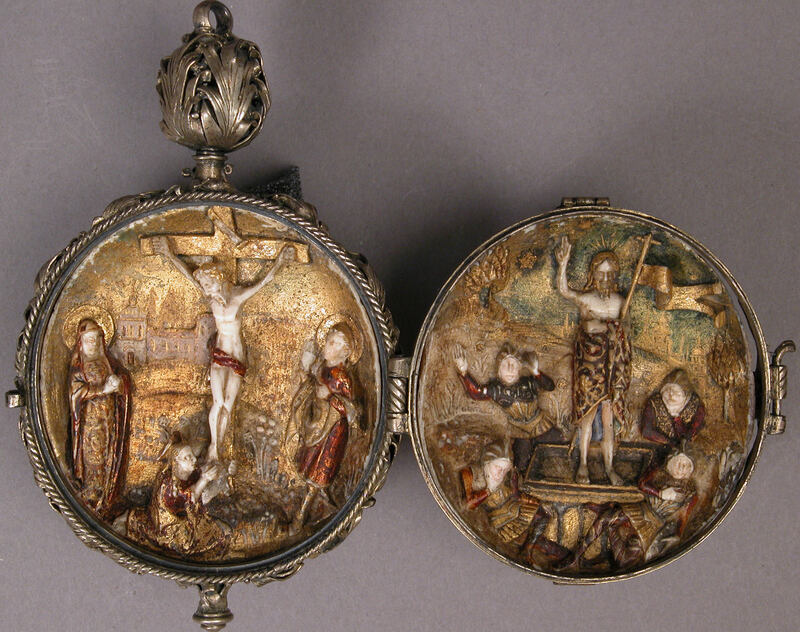Spanish Catholicism
The Reconquista which took place from 770 to 1492 Catholicism had become deeply embedded in Spanish national identity. The Reconquista or the Reconquest held the goal of expanding the Christian empires within what is now Spain. Since religion was put at the center of the unification that meant that it played a central role in their emerging national identity. This was reflected in the colonial exhibitions that were sponsored by the Spanish Crown. Many conquistadors brought religious objects with them on their journeys since they were meant to bring protection. In addition to their protective qualities they were also used in the forced conversion of the Indigenous communities that they encountered. The rosary bead that is shown here is an example of the small religious items that Europeans would take with them when they went on exploratory voyages. The rosary is carved into a shell which is symbolic of Saint James the patron saint of Spain and pilgrams. Rosarys were used in personal religious practice such as prayer. Not only were personal religious objects taken but also objects that could be placed in temples dedicated to Indigenous Gods in the hopes that they would be worshiped instead.
The Spanish used Catholic religious imagery in their military conquests since they thought it would assist them on the battlefield. One of these figures being the Virgin Mary. Popular religion in Spain was greatly impacted by Mary’s appearance on war time objects such as banners. Within Spanish popular religion Mary was seen as the kinder, more understanding side of God. By placing her on objects carried into war along with personal religious objects it was thought she would provide protection and guidance. Because of all of this the Spanish associated Mary with periods of violence and often labeled war time successes as Marian miracles.
